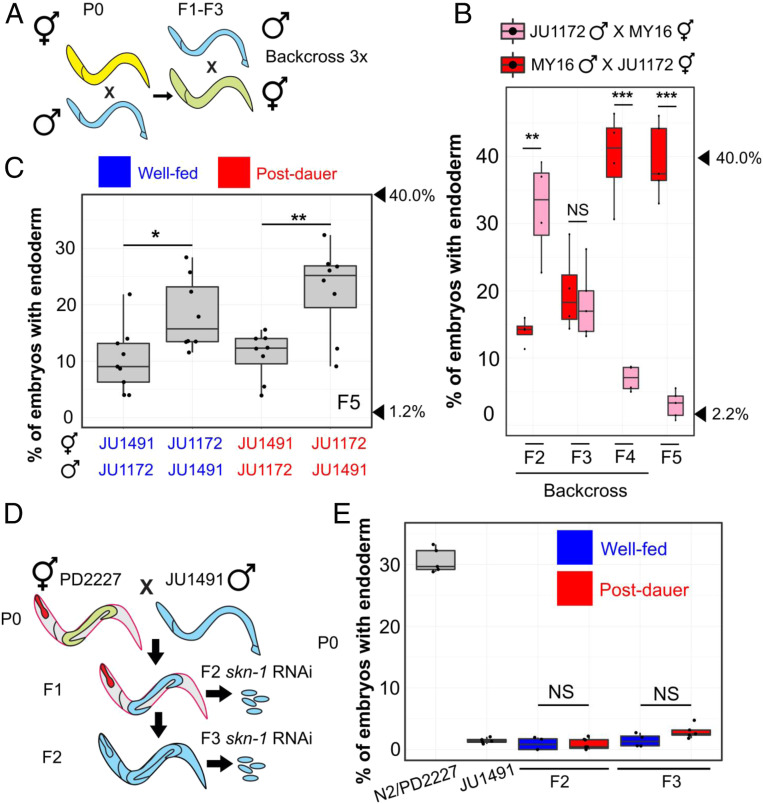Fig. 2.
POE is not attributable to mitochondrial DNA or cytoplasmic inheritance. (A) Schematic of mitochondrial transfer experiment. Blue and yellow represent different wild isotypes. Five to 10 hermaphrodites were used to backcross to the paternal strain at every generation for 3 generations. (B) POE in skn-1(RNAi) embryos. Data points represent replicates from a single reciprocal cross using postdauer animals. Arrowheads indicate phenotypes of JU1172 (40.0%) and MY16 (2.2%). (C) POE shown by skn-1(RNAi) F5 embryos of reciprocal crosses performed between JU1491 and JU1172. Data points represent independent crosses. Arrowheads indicate phenotypes of original JU1172 (40.0%) and JU1491(1.2%) strains. (D) When PD2227 (N2GPR-1 OE) hermaphrodites are mated to JU1491, non-Mendelian segregation of maternal and paternal chromosomes result in some F1 mosaic animals that express the maternally derived pharyngeal marker (myo-2::mCherry) but lose the body wall muscle (myo-3::mCherry) and germline (mex-5::GFP) markers. F2 self-progeny of the F1 mosaic animals contain only the JU1491 nuclear genome (SI Appendix, Fig. S5). (E) skn-1(RNAi) phenotype of N2/PD2227, JU1491, and F2 and F3 embryos from the mosaic animals. For C and E, blue represents experiments performed using well-fed animals, while red represents experiments performed using postdauer animals. Two-sample t test: not significant (NS), P > 0.05; *P ≤ 0.05; **P ≤ 0.01; ***P ≤ 0.001. Boxplots represent medians, with range bars showing upper and lower quartiles.

